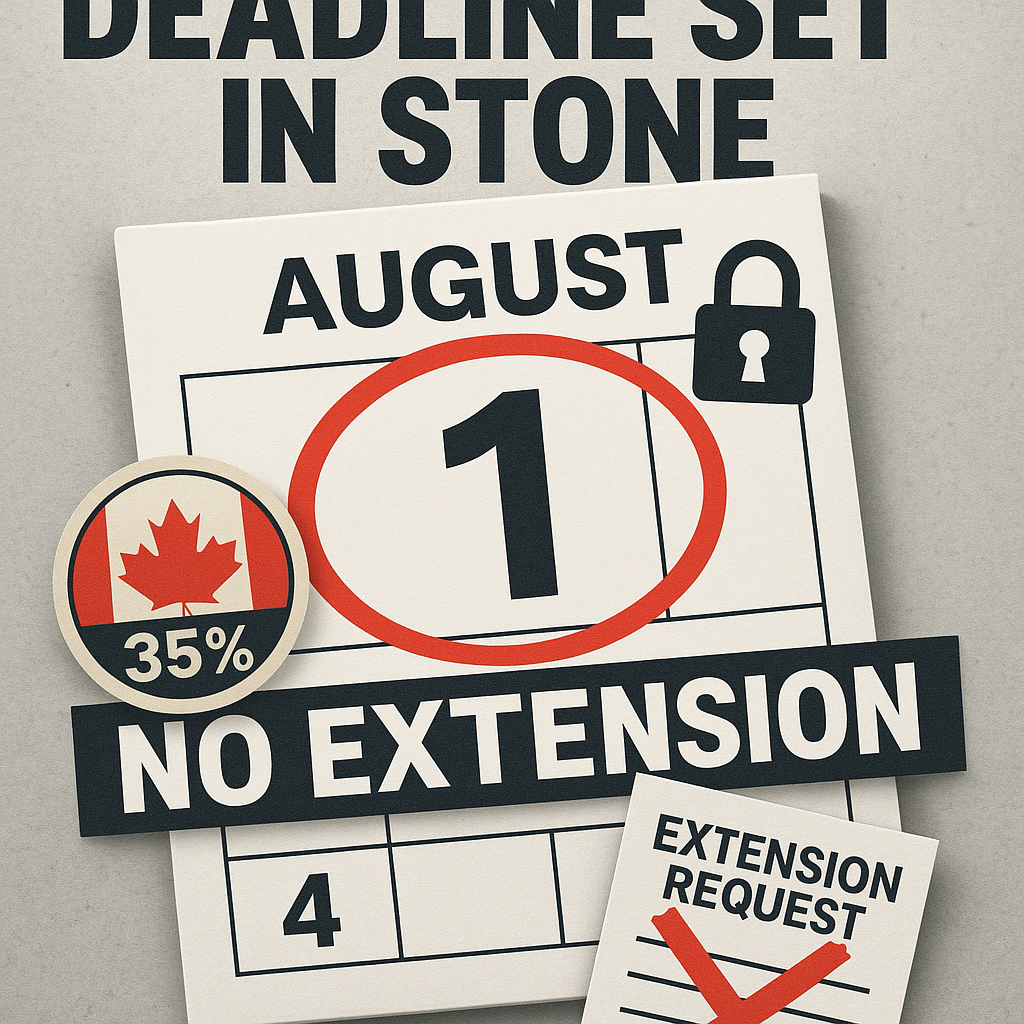White House Announces 35% Tariff on Canadian Goods: What Canadian Businesses Need to Know

By The Colmarsol Team
July 30, 2025
The White House announced today the 35% tariff on Canadian goods will be effective August 1st, citing concerns over trade imbalances and the need for domestic industry protection. This significant policy shift has understandably raised concerns among Canadian exporters, manufacturers, and business owners who depend on cross-border trade.
Historical Context Provides Perspective
While the announcement is concerning, historical precedent suggests this may not be a permanent measure. During recent U.S.-China trade tensions, tariffs reached as high as 145% before both nations negotiated adjustments. After months of diplomatic pressure and economic negotiations, tariffs were eventually reduced to approximately 30% following bilateral agreements.
Trade disputes typically follow a predictable pattern: initial shock and escalation, followed by intense negotiations, and ultimately adjustment toward more sustainable terms. The current situation with Canada appears to be following a similar trajectory.
Bank of Canada Responds with Cautious Monetary Policy
In today's policy announcement, the Bank of Canada confirmed that interest rates will remain unchanged, citing uncertainty surrounding the tariff situation as a key factor in their decision. This measured response reflects the central bank's recognition that trade policy developments could significantly impact Canada's economic outlook and inflation trajectory.
The Bank's decision to maintain current rates provides businesses with monetary policy stability during this period of trade uncertainty, though it also signals that policymakers are closely monitoring how tariff developments may affect the broader economy.
Canada's Trade Resilience
Canada maintains several advantages in this situation. The deep economic integration between Canadian and American businesses means U.S. companies rely heavily on Canadian suppliers across multiple sectors. This interdependence creates natural pressure for resolution, as disruptions affect businesses on both sides of the border.
Additionally, Canada's diversified economy and established trade relationships provide multiple pathways for adaptation during periods of uncertainty.
Strategic Business Response
Rather than reacting impulsively to these developments, Canadian businesses should focus on measured responses:
Assessment and Planning Businesses should conduct thorough risk assessments to understand their exposure to cross-border trade disruptions. This includes evaluating supply chains, customer bases, and revenue streams that could be affected.
Operational Flexibility Companies should explore opportunities to increase sourcing flexibility and identify potential efficiency improvements that could offset increased costs. This might include diversifying supplier networks or optimizing internal processes.
Information Management Staying informed about policy developments is crucial, but businesses should avoid making major strategic decisions based on initial announcements that may be subject to negotiation and change.
Moving Forward
While the 35% tariff represents a significant policy development, businesses should approach the situation with measured caution rather than alarm. Historical precedent suggests that initial tariff announcements often serve as negotiating positions rather than final policy outcomes.
Canadian businesses that maintain operational flexibility, conduct thorough risk assessments, and avoid hasty reactions will be better positioned to navigate this period of uncertainty and capitalize on opportunities as the situation evolves.
